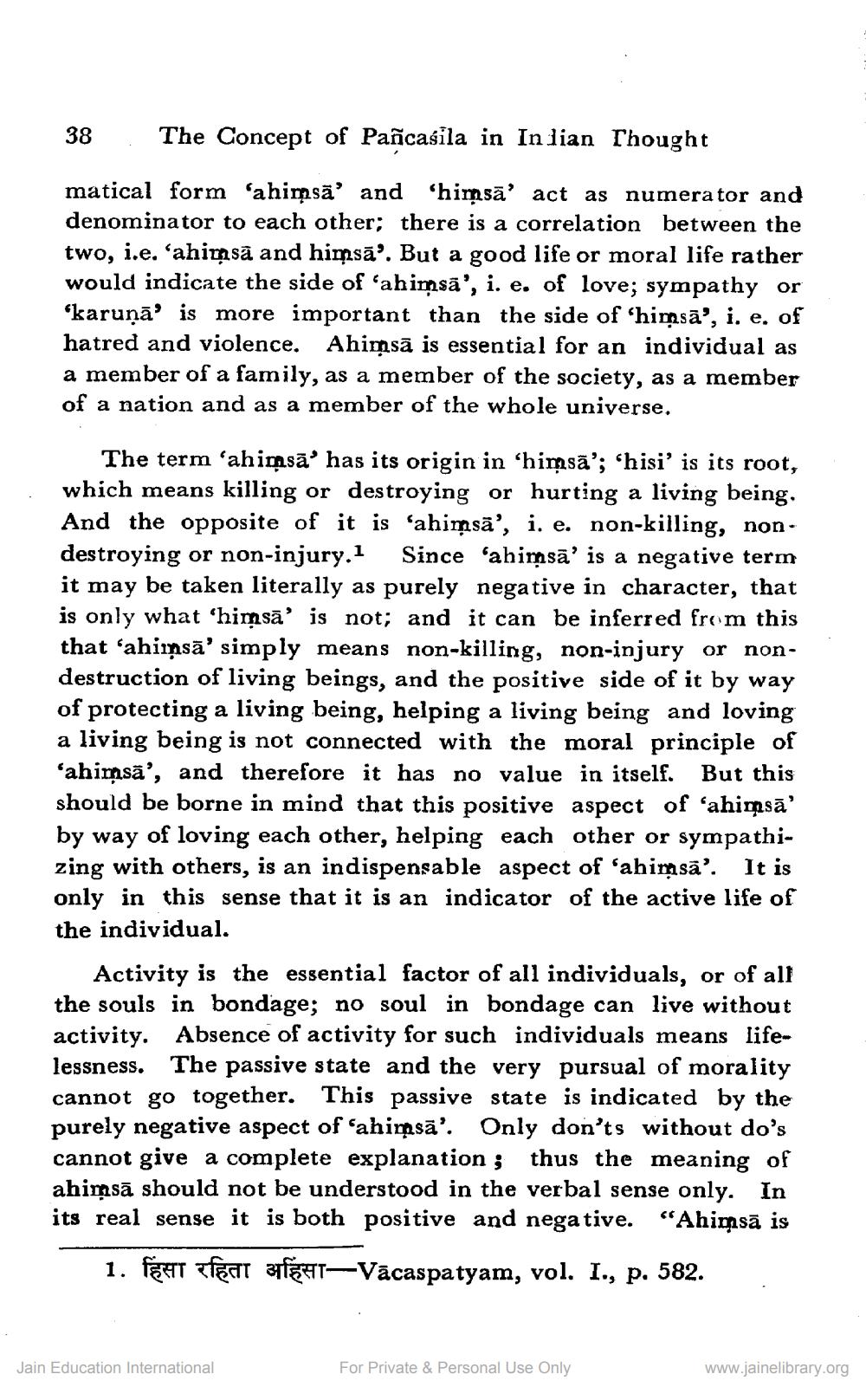________________
38 The Concept of Pancasila in Indian Thought
matical form 'ahimsa' and 'himsa' act as numerator and denominator to each other; there is a correlation between the two, i.e. ‘ahimsa and himsā”. But a good life or moral life rather would indicate the side of 'ahimsa', i. e. of love; sympathy or 'karuņa' is more important than the side of 'himsa', i. e. of hatred and violence. Ahimsa is essential for an individual as a member of a family, as a member of the society, as a member of a nation and as a member of the whole universe.
The term 'ahimsa' has its origin in 'himsa'; 'hisi' is its root, which means killing or destroying or hurting a living being. And the opposite of it is 'ahimsa', i. e. non-killing, nondestroying or non-injury.1 Since 'ahimsa' is a negative term it may be taken literally as purely negative in character, that is only what 'himsa' is not; and it can be inferred from this that 'ahimsa' simply means non-killing, non-injury or nondestruction of living beings, and the positive side of it by way of protecting a living being, helping a living being and loving a living being is not connected with the moral principle of 'ahimsa', and therefore it has no value in itself. But this should be borne in mind that this positive aspect of 'ahimsa' by way of loving each other, helping each other or sympathizing with others, is an indispensable aspect of 'ahimsa'. It is only in this sense that it is an indicator of the active life of the individual.
Activity is the essential factor of all individuals, or of all the souls in bondage; no soul in bondage can live without activity. Absence of activity for such individuals means lifelessness. The passive state and the very pursual of morality cannot go together. This passive state is indicated by the purely negative aspect of 'ahimsa'. Only don'ts without do's cannot give a complete explanation; thus the meaning of ahimsa should not be understood in the verbal sense only. In its real sense it is both positive and negative. "Ahimsa is
1. fær fear a-Vacaspatyam, vol. I., p. 582.
Jain Education International
For Private & Personal Use Only
www.jainelibrary.org




